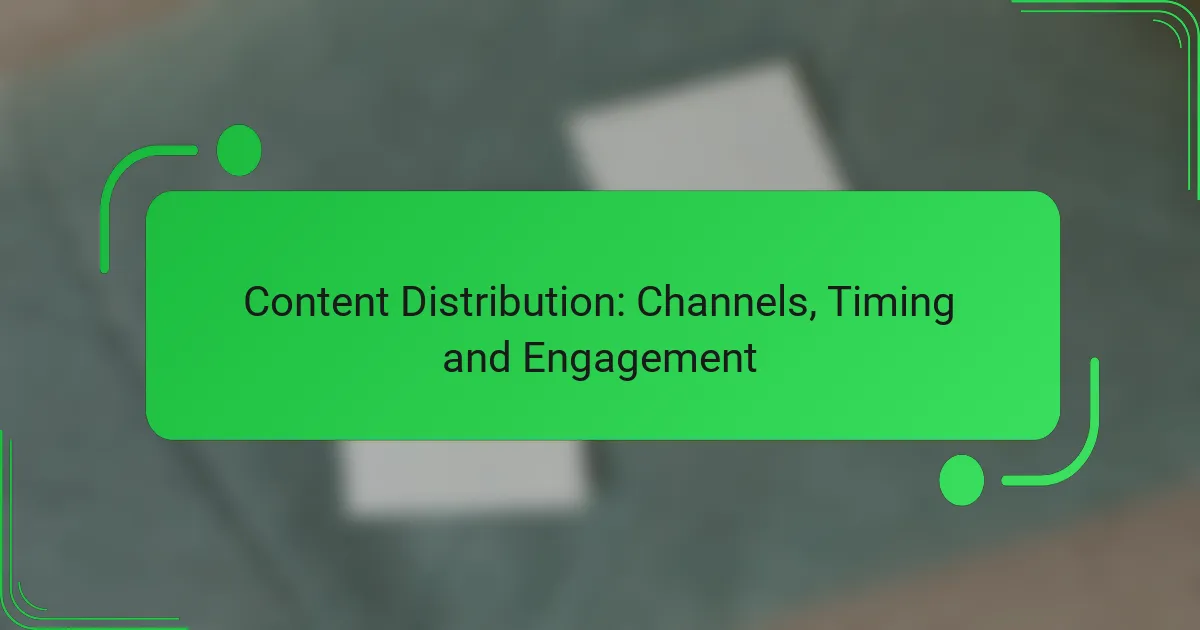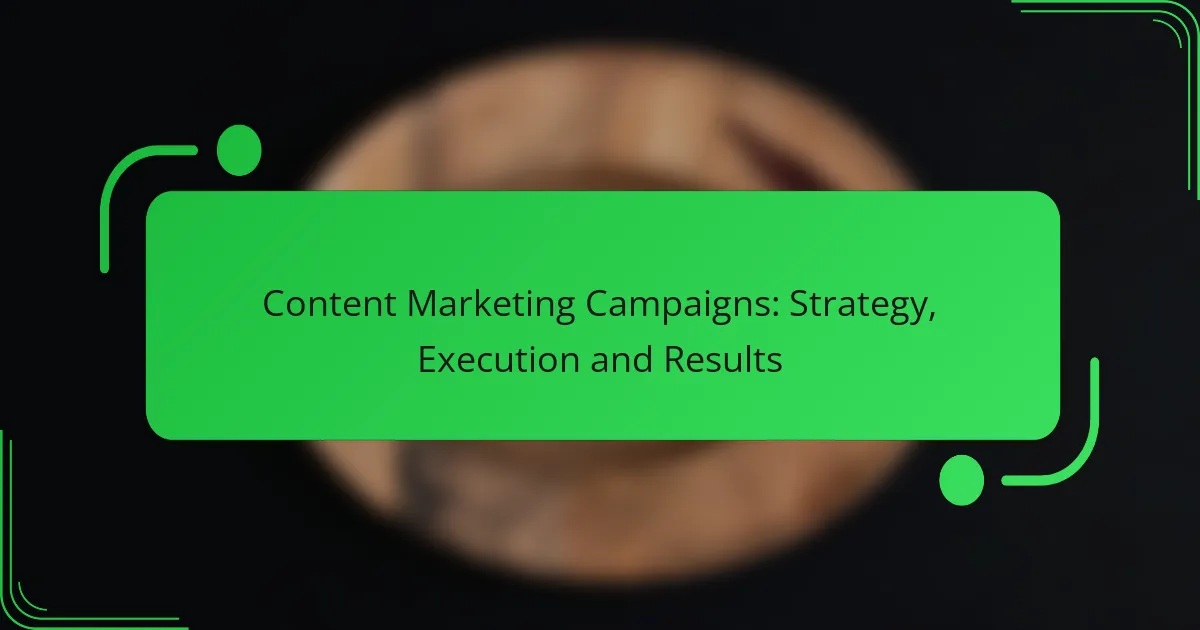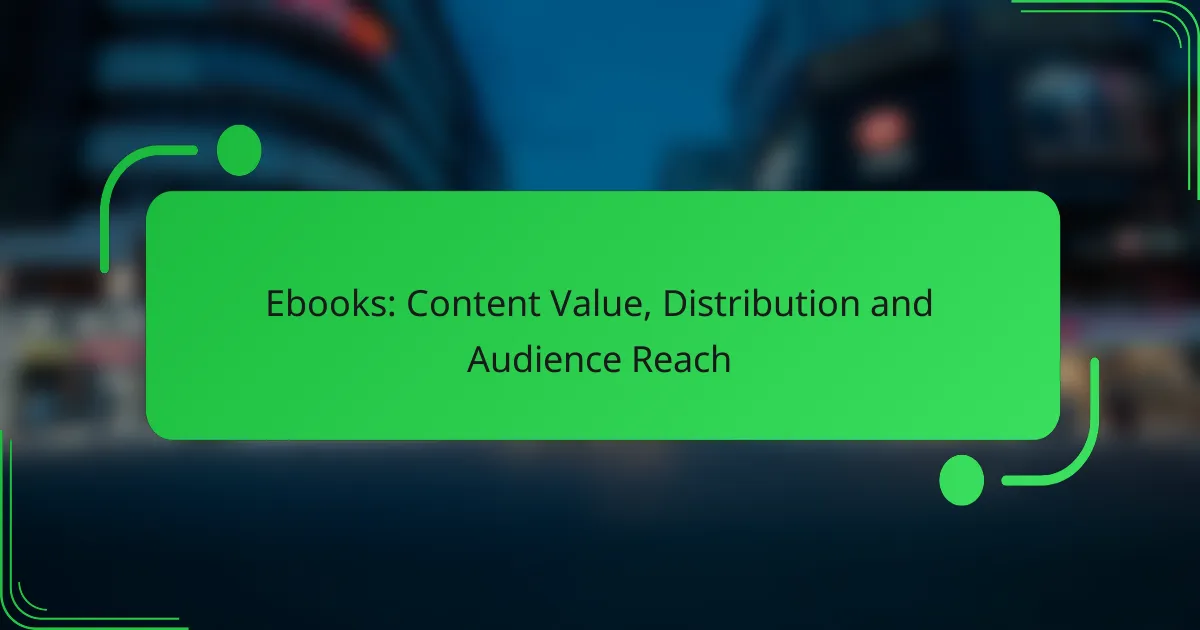Effective content distribution is crucial for maximizing reach and engagement across various audience segments. By leveraging the right channels—such as social media, email marketing, and influencer partnerships—and timing your content strategically, you can significantly enhance its impact. Understanding your audience and the unique characteristics of each distribution method will help you achieve your content goals more effectively.
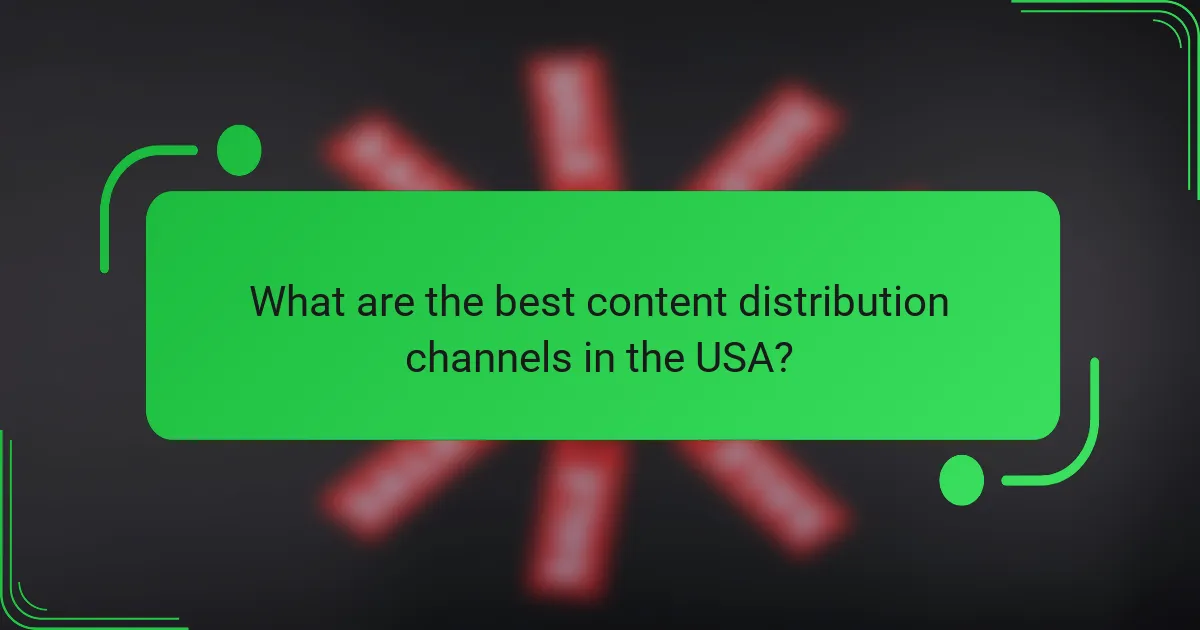
What are the best content distribution channels in the USA?
The best content distribution channels in the USA include social media platforms, email marketing, content syndication networks, influencer partnerships, and SEO-optimized blogs. Each channel has unique strengths and can effectively reach different audience segments, making it essential to choose the right mix based on your goals.
Social media platforms
Social media platforms like Facebook, Instagram, Twitter, and LinkedIn are powerful tools for content distribution. They allow brands to engage with audiences directly, share content quickly, and utilize targeted advertising to reach specific demographics.
To maximize effectiveness, tailor your content to fit the platform’s style and audience preferences. For example, use eye-catching visuals on Instagram and concise updates on Twitter. Regular posting and interaction can significantly enhance engagement rates.
Email marketing
Email marketing remains one of the most effective channels for content distribution in the USA. It allows for personalized communication and can drive traffic directly to your website or landing pages.
To optimize email campaigns, segment your audience based on interests and behaviors, and craft compelling subject lines. Aim for a consistent schedule, such as weekly or bi-weekly newsletters, to keep your audience engaged without overwhelming them.
Content syndication networks
Content syndication networks help distribute your content across various platforms, increasing visibility and reach. These networks, such as Outbrain and Taboola, place your content on high-traffic websites, driving traffic back to your site.
When using syndication, ensure your content is engaging and relevant to attract clicks. Monitor performance metrics to assess which platforms yield the best results and adjust your strategy accordingly.
Influencer partnerships
Influencer partnerships involve collaborating with individuals who have a significant following in your niche. This strategy leverages their credibility and reach to promote your content to a broader audience.
Choose influencers whose values align with your brand and whose audience matches your target demographic. Establish clear expectations regarding content creation and distribution to ensure a successful partnership.
SEO-optimized blogs
SEO-optimized blogs are crucial for organic content distribution, helping your content rank higher in search engine results. By using relevant keywords and providing valuable information, you can attract more visitors to your site.
Focus on creating high-quality, informative posts that answer common questions in your industry. Regularly update your blog with fresh content and optimize older posts to maintain visibility and engagement over time.
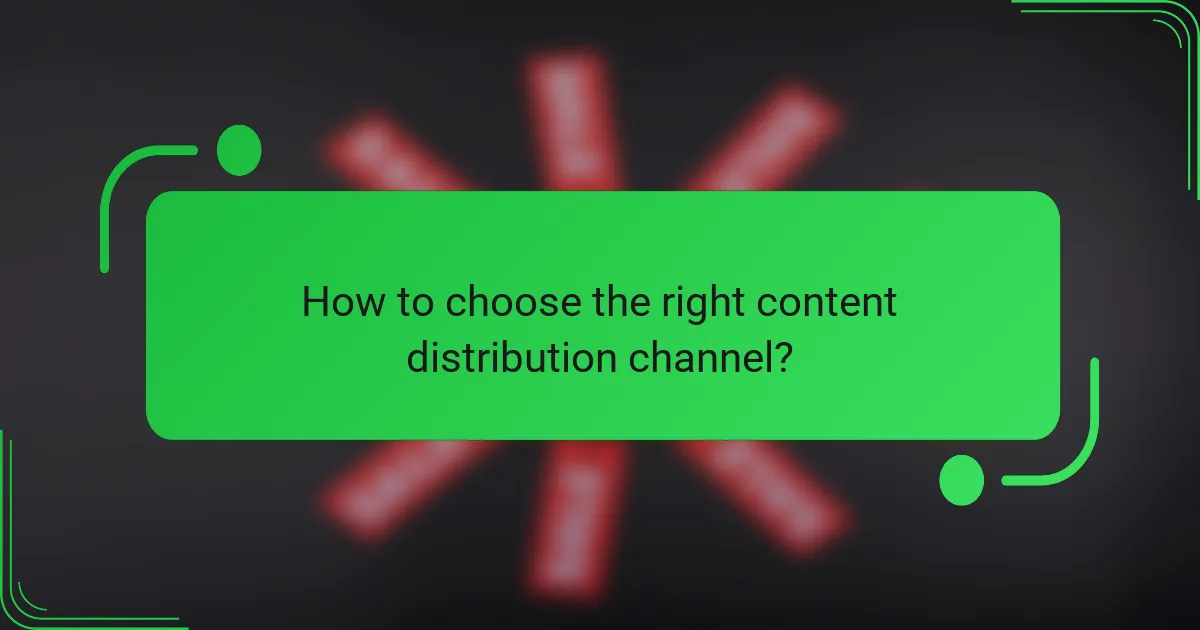
How to choose the right content distribution channel?
Selecting the right content distribution channel involves understanding your audience, the format of your content, and how to measure engagement effectively. Each channel has unique characteristics that can significantly impact the reach and effectiveness of your content.
Audience demographics
Understanding your audience demographics is crucial in selecting the appropriate content distribution channel. Factors such as age, gender, location, and interests can influence which platforms your audience frequents. For example, younger audiences may prefer TikTok or Instagram, while professionals might engage more on LinkedIn.
To effectively reach your target demographic, consider conducting surveys or analyzing existing data to identify where your audience spends their time online. Tailoring your distribution strategy to align with these insights can enhance engagement and conversion rates.
Content format compatibility
Different distribution channels support various content formats, such as text, video, images, or audio. For instance, platforms like YouTube and TikTok are ideal for video content, while blogs and newsletters are better suited for written articles. Assessing the compatibility of your content format with the chosen channel is essential for maximizing impact.
When selecting a channel, consider the strengths of your content. If your material is visually rich, platforms like Instagram or Pinterest may be more effective. Conversely, if your content is data-driven, LinkedIn or industry-specific forums could be more appropriate.
Engagement metrics
Engagement metrics are vital for evaluating the effectiveness of your content distribution strategy. Key metrics include likes, shares, comments, click-through rates, and time spent on content. Monitoring these indicators helps you understand which channels resonate best with your audience.
To optimize your strategy, regularly analyze engagement data and adjust your distribution approach based on performance. For example, if you notice higher engagement on Facebook compared to Twitter, consider reallocating resources to focus more on Facebook for future campaigns.
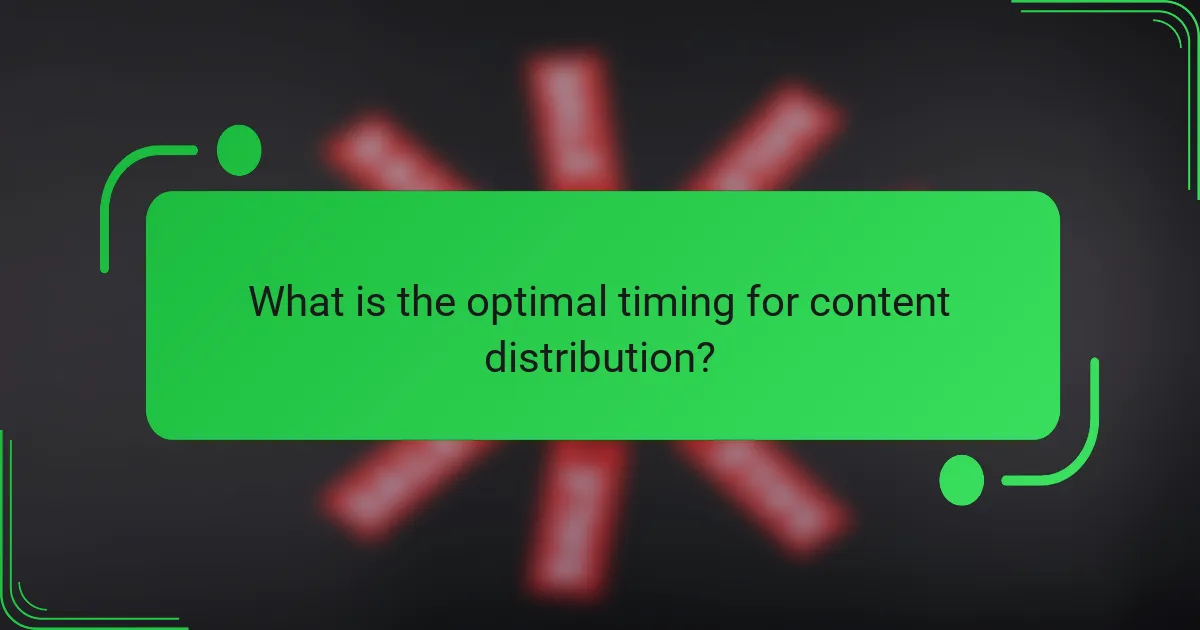
What is the optimal timing for content distribution?
The optimal timing for content distribution hinges on understanding when your audience is most active and receptive. By strategically scheduling your content, you can significantly enhance engagement and reach.
Peak engagement hours
Peak engagement hours vary by audience and platform, but generally, weekdays during late mornings and early afternoons are effective for many sectors. For instance, social media platforms often see higher activity between 11 AM and 1 PM, while email campaigns may perform better in the early afternoon.
To maximize visibility, consider using analytics tools to track when your specific audience interacts most with your content. This data can guide you in scheduling posts or releases during these peak times.
Seasonal trends
Seasonal trends can greatly influence content distribution timing. For example, retail brands often ramp up marketing efforts during the holiday season, while educational content may see spikes at the start of school terms. Understanding these cycles allows you to align your content strategy with audience expectations.
Additionally, consider local holidays and events that may affect engagement. Tailoring your content distribution to coincide with these periods can enhance relevance and interaction rates.
Event-based timing
Event-based timing involves aligning content releases with specific events or trends relevant to your audience. For instance, launching a campaign during a major industry conference can capitalize on heightened interest and engagement.
Monitor industry calendars and social media trends to identify key events. Timing your content around these occasions can create a sense of urgency and relevance, driving higher engagement from your audience.
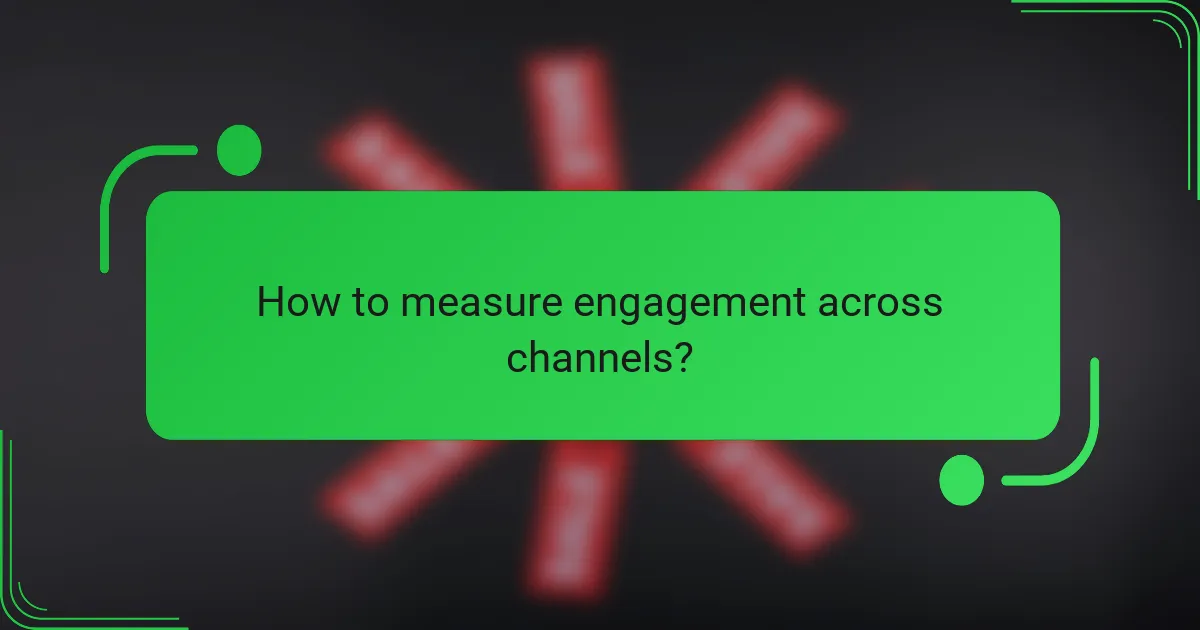
How to measure engagement across channels?
Measuring engagement across channels involves analyzing user interactions to understand how effectively your content resonates with your audience. Key metrics and tools help quantify this engagement, allowing for data-driven decisions to enhance content distribution strategies.
Analytics tools
Analytics tools are essential for tracking engagement metrics across various channels. Popular options include Google Analytics, HubSpot, and social media insights, which provide data on user behavior, traffic sources, and conversion rates. Choose tools that align with your specific channels to gain the most relevant insights.
For example, Google Analytics can help you track website engagement, while Facebook Insights offers detailed metrics on post interactions. Integrating these tools can provide a comprehensive view of engagement across platforms.
Key performance indicators
Key performance indicators (KPIs) are critical for measuring engagement effectively. Common KPIs include click-through rates, time spent on page, social shares, and conversion rates. Establishing benchmarks for these metrics allows you to evaluate performance over time.
For instance, a click-through rate of 2-5% is generally considered good for email campaigns, while social media posts typically aim for engagement rates of around 1-3%. Regularly reviewing these KPIs can help you identify trends and areas for improvement.
Audience feedback
Gathering audience feedback is a vital aspect of measuring engagement. Surveys, polls, and direct comments can provide qualitative insights into how your content is received. Encourage feedback through calls to action and monitor responses to gauge audience sentiment.
Utilizing tools like SurveyMonkey or Google Forms can facilitate this process. Additionally, analyzing comments on social media can reveal valuable insights into audience preferences and areas where your content may need adjustment.
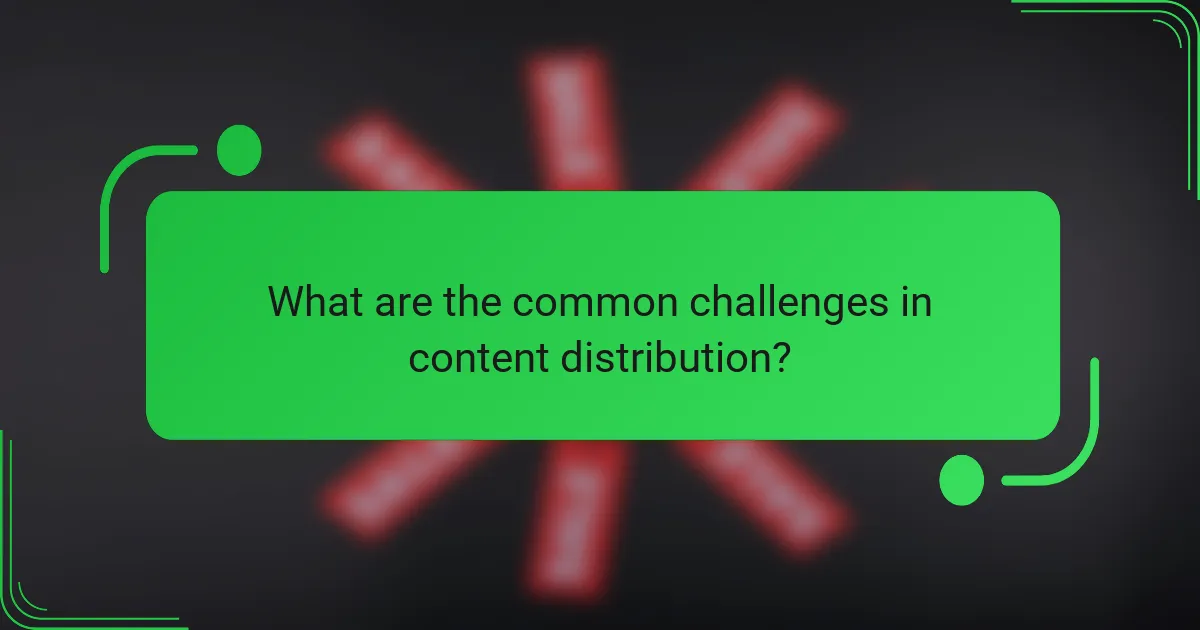
What are the common challenges in content distribution?
Content distribution faces several challenges that can hinder its effectiveness. Key issues include content saturation, audience targeting, and timing, all of which require careful consideration to optimize reach and engagement.
Content saturation
Content saturation occurs when audiences are overwhelmed by the sheer volume of information available. This can lead to decreased engagement as users struggle to find relevant content amidst the noise.
To combat content saturation, focus on creating high-quality, unique content that offers real value to your audience. Consider niche topics or specialized formats that can stand out in a crowded market.
Additionally, utilize data analytics to identify what resonates with your audience. Regularly assess engagement metrics to refine your content strategy and avoid contributing to the saturation problem.
